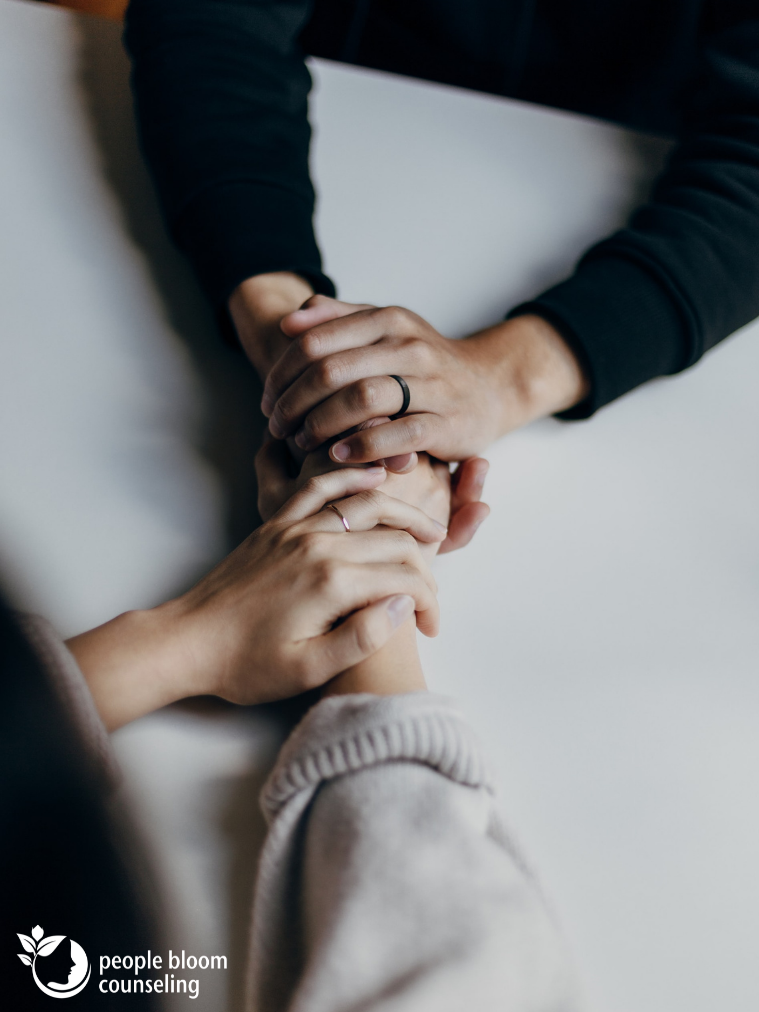Photo by Raychan on Unsplash
As a therapist and fellow human being, I love Brené Brown. She challenges the notion that we need to have our sh*t together, hide our vulnerability or be alone in our shame. She encourages us to take risks, surround ourselves with arena-minded people and embrace our imperfections. What’s not to love about that?
More recently, I’ve been thinking about how this might show up for people from marginalized communities. What does being vulnerable and taking risks look like for people from underrepresented groups?
A caveat
As a 1.5-generation Chinese Canadian woman living in the US in a stable home environment, I know I have a lot of privilege, but that doesn’t always translate to feeling emotionally safe in my environment. I do not pretend to fully understand or speak to the complex sociocultural identities of different marginalized groups. We are not all the same and we have our unique experiences and identities. As a WOC, I am, however, trying to shed light on the possibility that taking risks and giving perfectionism the middle finger can be harder for people from marginalized communities.
To more fully understand someone’s current experience, we often need the back story.
My back story
I was born in Hong Kong, a British-ruled colony that was handed back to China in 1997. For the first eight years of my life, I was with my people. Everyone looked like me and there were no issues with representation. The sense I got was that White people were seen favorably in HK. Some spoke Cantonese and held high government jobs, though I didn’t see it for myself. Impossible western beauty standards of pale skin, large eyes and “the straight nose” prevailed, but I didn’t think much of it as a kid. My parents modeled hard work and that was that.
As uncertainty about the handover loomed, many people considered migration. My family immigrated to Vancouver, BC, Canada when I was eight years old. I remembered answering a question from my teacher on the second day of class, “What color was the plane you flew in from?”
“White and green,” I answered quietly.
I was so nervous to speak out loud in front of everyone. I went from being with people like me to being one of two Asian students. The other kid was a CBC, a Canadian Born Chinese, so even then, it’s not like we were kindred spirits. Kids mocked my English fluency (or their lack of) and the soy-marinated drumsticks my mom packed for my lunch. One time, two popular White girls pulled my chair from behind me so I might land on the ground. I noticed the chair moving and instinctively put my hand between my legs to grab a hold of the seat and heard, with giggles, “Oh, look at where her hand is!”
Kids tease each other all the time and I’ve heard much worse bullying stories. But, there’s an added element of wondering if I was picked on because of my race. Sometimes, it’s an obvious yes. Other times, it’s much more subtle.
In the first few years, my sister and I changed schools often. Where we lived, there wasn’t a qualified English as a Second Language (ESL) program to help me go beyond my second grade Hong Kong (British) English level. Finally at Kingswood Elementary, we went through ESL classes with Mr. Kibblewhite, whom nearly every student had a crush on. Given the influx of immigrants coming into Vancouver at the time, we were kicked out of ESL, not because we were proficient, but because of limited resources.
At various times, I made friends with Elaine, Roy, Frank, David, Xavier and Susan who were CBC, white, Flipino and Black. There weren’t a lot of people who looked like me but I also wasn’t the only one who was different. We laughed; we joked. I had a place and it was with a diverse group of beautiful people. Life was simpler then and those were good times.
My parents, in the meantime, worked their tails off starting their own telephone and alarm installation company as a condition for Canadian immigration. They had limited connections and had to break ground on foreign land. Mom was an English major, but couldn’t always find the right words to express herself. For dad, speaking English was like doing physical labor. Try going to a foreign country and using their language to get by, not for fun, but for survival. They felt that exhaustion.
A growing majority minority
In the late 80’s and early 90’s, Vancouver’s demographics began to change. Mass migration from HK and Taiwan meant that people who looked like me flooded the city, the province, the country. I moved through middle and high school with Chinese-speaking peers. Chinese businesses, shops, restaurants, malls and grocery stores started to pop up everywhere. Because of accessibility to my own culture, I reconnected to my roots and started listening to pop Chinese music, passing notes in my native tongue and drinking lots of bubble tea. It was a different kind of belonging.
We were slowly becoming the majority minority.
Meanwhile, my parents' business picked up. Serving mostly their own people and a blooming market, there was more work than there were hands to do it. Many decades later, they recall a very kind white-identified regional manager at Panasonic who visited their warehouse often and took them to their first Canadian fine dining experience. They were very sad when he passed away from cancer at a young age.
College days
By the time I went to college at The University of British Columbia (UBC), it was easy to spot Asian people on campus, especially in economics and computer science classes. My Department of Psychology and Family Studies was predominantly White but I joined a CBC college group where it was yet another kind of belonging. My Chinese speaking and writing ability deteriorated and my English proficiency increased again. During a class in Family Life Education, I disagreed with the professor on an assignment and my parents asked me to stand down. “Don’t rock the boat. Write what they want to hear.” I rebelled and stated my point of view. I got a C+ for that assignment, the lowest grade since I declared my major. My parents thought that was a lesson for me and it was: speaking out against authority can be costly but I also don’t regret it one bit.
Two and a half hours south
I got my green card my senior year in college through my aunt’s family petition 15+ years earlier. Post-college, I came down to Seattle to work for a local Chinese non-profit organization before getting into Seattle Pacific University (SPU) for grad school. Being one of three Asians in the cohort, I was back to hustling. We were a tight-knit group and I made a lifelong friend, but there was something about being in the US, only 2.5 hours away from home, that made me keenly aware I was different from the dominant culture.
I didn’t have my community with me; I had to make new ones. I have to fit in to get in. I clearly remember a conversation with a White classmate about our skin colors. The word, “Yellow” came up. I held my hand next to her pale white skin and said, “When I think about yellow, I think about this,” pointing to a canary yellow on my pencil case (remember one of those?! I still have said pencil case). “Our skin colors aren’t that different.”
Looking back, I was denouncing a part of my cultural and racial identity in favor of the White dominant culture. If we’re not that different, you’ll accept me, right? If I work hard enough, I’ll make it here, right? These thoughts point to the need to assimilate, but it also conveyed uncertainty. I do not know for sure that my efforts paid off.
Alas, I found people like me: 1.5 generation Asian working professionals who came to the states for college, or, ones who were born here but came from an immigrant family. There is an ease to our shared experience. To this day, they remain my closest friends.
Emotional vulnerability as a woman of color
As I consider my early years of studying and working in the US, I’ve been shaped by various cultural expectations of what it means to be a WOC. Don’t rock the boat. Work hard. Try to fit in. Smile and be nice. As the only person of color in a very supportive practicum group, I was afraid to take up space, so much so that when my practicum supervisor said gently that the most valuable resource people can give me is their time, I broke down. Six months into my first job, my supervisor picked up on my tendency to be hard on myself. Here are her words, verbatim: “Ada, I don’t expect you to be perfect!”
Being emotionally vulnerable requires me to be okay with falling short, to sit with people’s grace and/or judgment and my own shame, to be honest with what I might need in the moment and to courageously ask for it. Everything about that goes against the grain of what I’ve been taught to do to “make it,” to be successful as a WOC. But Brené is inviting me to let my guard down, because to be vulnerable is to be courageous. Does she know what she’s really asking of me?
Emotional vulnerability in marginalized communities
I then consider other marginalized communities where it hasn’t always been safe to be driving while Black, to be the first Hispanic in your family to graduate from college, to come out as queer, to be neurotypical but not a child prodigy, to be undocumented, to be fat-bodied, to be living paycheck to paycheck, to keep showing up even when you feel misunderstood or at times, “othered”. When your basic hierarchy of needs are not always met and you get the message that you need to stop exerting so much control over your environment and your outcome, that can be a total heart and mind fu*k.
I argue that when people from marginalized communities are accepted, welcomed and fully celebrated for who they are, then they have more energy to risk being emotionally vulnerable. To experience this sense of belonging without the need to act a certain way or otherwise risk being racially profiled, favorably or not; that’s emotional and physical security. If Brené is inviting all people to come forward and show their cards, then we need to be aware of the additional layers of complexity and risk this might pose for marginalized groups. They might have more to lose.
While equity and liberation movements continue to work at removing systemic barriers to access, it is not an even playing field and we shouldn’t treat it as such. It is in the safety and security of a responsive and inclusive environment that we learn to come forth as more fully ourselves. It is in these corrective emotional experiences, new experiences that correct earlier ones, for the better, that courage in vulnerability can show up.



















